Vancouver Island’s Great Forest Fire of August 1938
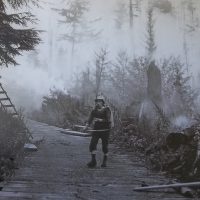
It’s the smoke that people most remember of that horrific forest fire in the summer of 1938.
A mile high, it enveloped almost two-thirds of Vancouver Island and was reported as far south–400 miles (640km)–as Portland, Ore. Its fly-ash was so thick that two ships collided off Port Angeles.
This was the lethal by-product of Vancouver Island’s worst forest fire ever, the Great Fire (so-called). At one point it was feared that flames would consume everything between Campbell River and the Malahat.
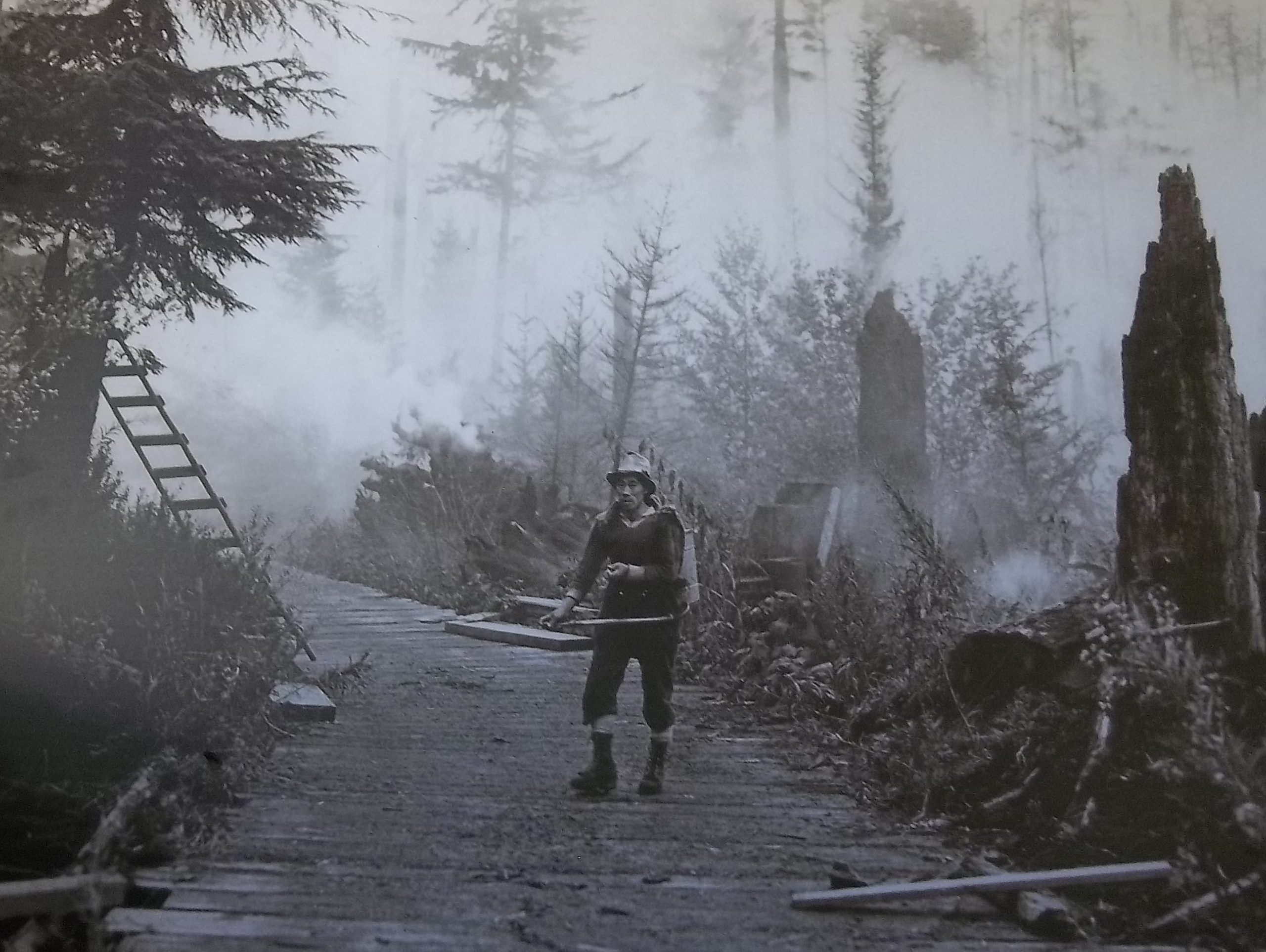
A haggard looking firefighter amidst some of the devastation of the 1938 fire in a photo on display at Duncan’s British Columbia Forest Discovery Centre.
Only a whim of weather saved us
The summer of ‘38 was marked by the longest drought in 64 years. Everywhere in the Pacific Northwest, Oregon, Washington, Idaho and B.C., it was the same: So hot and dry that when a forester accidentally dropped his pick on a rock, a resulting spark ignited the grass at his feet.
“Dense smoke from fires in other areas hang like [a] pall–logging camps close or work early shifts,” read a newspaper headline on July 21st. So thick was the aerial blanket that it blocked out the sun. But the Cowichan Valley was fortunate in its own battles of 30 brush fires during the 96 degree F heatwave. Only that at Cowichan Lake’s Camp 10 had caused serious damage (10 million feet of cold-decked timber) before being contained by 175 firefighters.
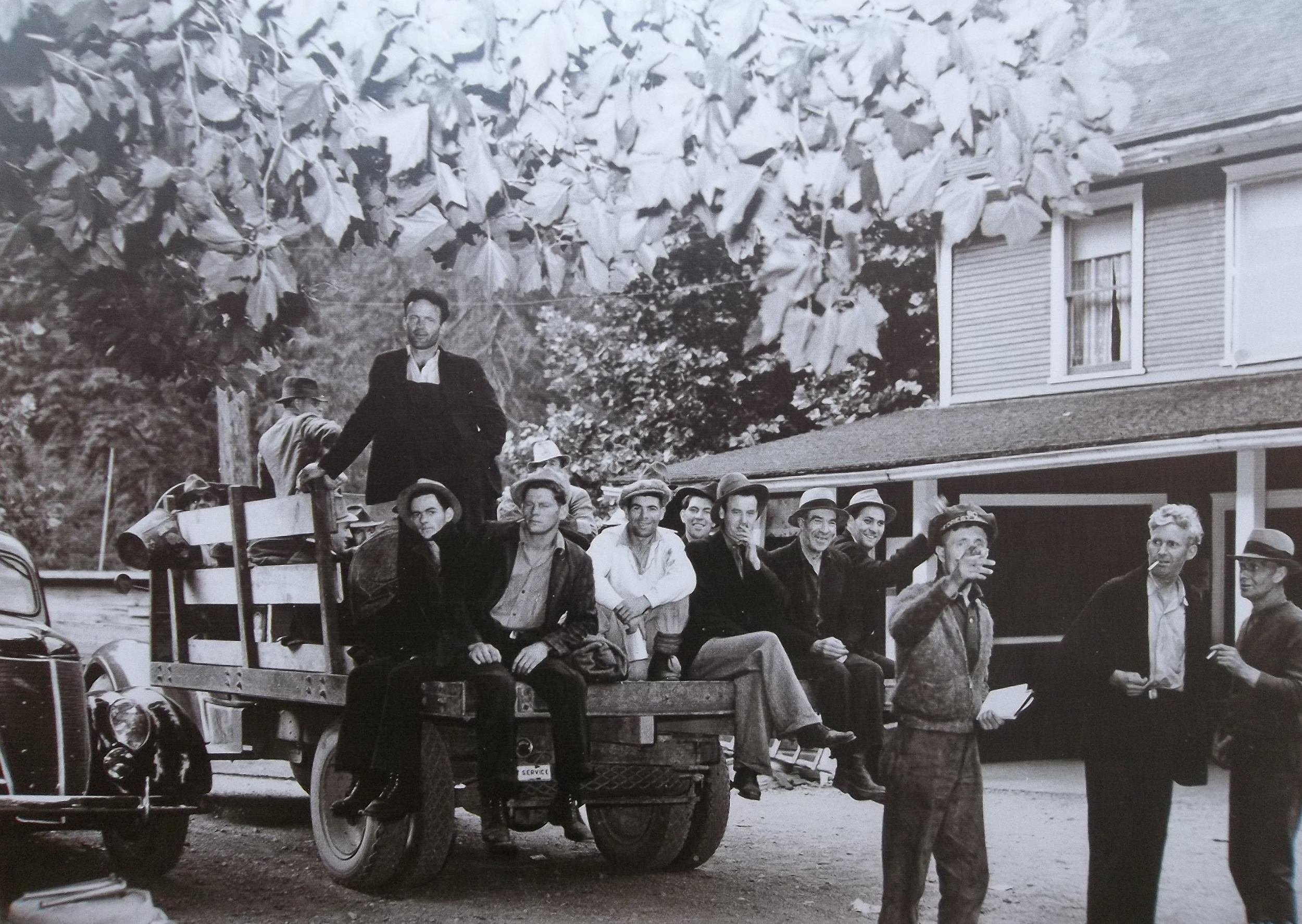
Newly-arrived firefighters, many of them on relief as this was still in the Depression; some were recruited, willingly and otherwise, from Vancouver area beer parlours.
It was in a Menzies Bay log pile north of Campbell River that all hell broke loose
In a matter of hours, and despite the frantic efforts of 400 firefighters, heavy winds whipped the first, small flames into a galloping monster. Within 48 hours, several thousand acres of prime timber had been consumed.
Under the direction of Chief Forester E.C. Manning, and using planes, boats, trains, trucks, bulldozers, steam shovels–and brawn–750 men attempted to contain the holocaust. By the third day, all efforts seemed futile. Forbes Landing was under siege, Campbell River threatened and more men in the front lines were proving to be helpless as the flames crowned from treetop to treetop at breathtaking speed.
Only a change in the wind’s direction gave a reprieve to Campbell River
By this time 30,000 acres had been blackened. It was just the beginning, as the great forest fire spread ever farther afield, at one point torching an area 18 miles wide–180 square miles.
“There are more than 1200 men fighting the fires,” Provincial Police Insp. Robert Owens reported. “Some of them have gone three days and nights without rest or sleep, and all have to be relieved at once.”
Worse yet: “The fire is now…sweeping southeast before a stiff new wind. At present it looks as if the fire cannot be held away from the Comox logging camps, towards which it was heading when I left. A great pall of smoke covers the whole of the roadway to Victoria, but as far as we could see, there are no other fires in this area. The Island Highway is open.”
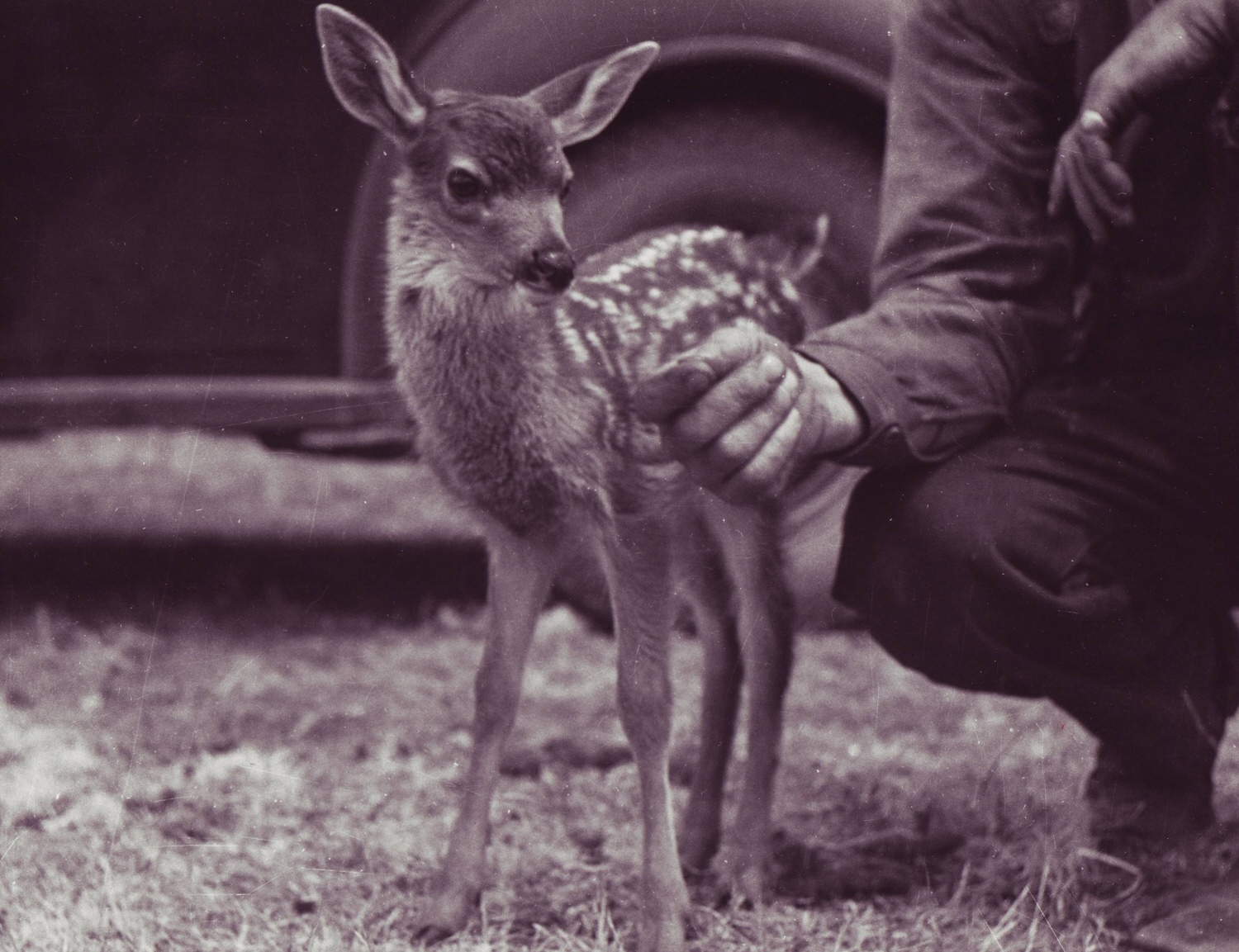
This orphan of the storm was lucky; the loss of wildlife from the ‘Great Fire of 1938’ was incalculable.
Self-generated winds of up to 90 miles (150 km) per hour drove all opposition before them. Destroyers HMCS St. Laurent and Fraser, Canada’s West Coast navy, anchored in Duncan Bay in case Courtenay and surrounding areas had to be evacuated. The British cruiser, HMS York, en route to Esquimalt, detoured to stand by to assist in the evacuation of Campbell River if it became necessary, and to add her bluejackets to the men in the fire lines.
Despite some beneficial changes in the wind direction, Comox Logging Camp and its 3 million feet of cut lumber were gone, Elk Falls abandoned, Forbes Landing surrounded by flames.
The death toll of wildlife was staggering
Provincial Minister of Lands A.W. Gray closed all woods from Sooke to Salmon River with the grim statement: “The situation on the lower coast is fraught with more serious danger to life and property than has ever existed within the experience of the lands department.”
His only cheerful note was that Elk Falls had been spared: “an oasis of green in a swamp of blackened timbers”.
Forbes Landing where, for four days and nights a handful of men with a single pump had held the fort, was abandoned to its fate. Ironically, this was the Great Forest Fire’s finest–and worst–hour. The battle was lost because of sabotage: 1000 feet of hose had been slashed, the pump ruined by sugar in its gas tank.
Only then was it announced that 1000 firefighters, mostly from the ranks of the Vancouver unemployed, had been discharged for “inefficiency and unwillingness to take their places in the fire lines”.
Next to be threatened were the settlements of Campbelltown and Comox Camp 3, the Victoria Colonist reporting that the fire had “doubled its area of destruction in eight brief hours,” that it was stalking settled areas on six fronts. Courtenay residents prepared to be evacuated, flames swept closer to Forbidden Plateau and Elk Falls Park.
Premier Duff Pattullo broadcast: “The conflagration is the most serious in the history of the province… I exhort everyone in B.C. to take no action that will increase the fire hazard.”
July 23, trucks and trains of Canadian Collieries Ltd. stood ready to evacuate Bevan, between Cumberland and Courtenay, where firefighters hosed down buildings to protect them from flying sparks, and 300 refugees from outlying areas sheltered in the community hall.
On the 29th, a new outbreak occurred six miles north of Oyster River–this one believed to be arson. The Island Highway had been breached in two places and aircraft pilots described the devastation as a “huge arm, 25-30 miles long, about 10 miles at the top and narrowing below Quinsam River”.
Finally, the Great Forest Fire began to lose momentum as winds and temperatures fell. The herculean efforts of 2000 men and the first rains in two months steadily turned the tide. It took weeks to totally extinguish the worst of the fires but the worst was over. An estimated 30,000 hectares of prime first-growth forest, and millions of board feet of cut timber, were lost as well as the immense costs of firefighting for the province.
Something for us to think about in the hot and dry days of summer!
* * *
Through August 2014, the B.C. Forest Discovery Centre in Duncan celebrating, if that’s the right word, the Great Forest Fire as The Bloedel Fire aka The Sayward Fire aka The Campbell River Fire, with a display in the former B.C. Forest Ranger’s house.
Burning Snags and Raining Ashes recalled that deadly summer of 1938 with this quote from Vancouver Daily Province reporter and eyewitness Torchy[!] Anderson: “Hundreds of men, scores of pumps, [50] miles of hose, snorting caterpillar tractors, axe and shovel crews–every available means of modern forest-fire fighting is pitted against the Red Enemy…”
Perhaps the single consolation of the Great Forest Fire is that it ‘sparked’ a major overhaul of the provincial reforestation program.
UPDATEE: As of August 31, 2018, it was reported that we’ve suffered a record 12,985 square kilometres of forests damaged by fires this past summer.
The good news: Although more ground has been scorched, the devastating harm to humans (homes,livelihoods, etc.) has not been as great.
The bad news:400 of these fires were caused by human activity: camp fires, cigarettes, flares and car accidents.
Do we never learn?
Other posts of interest
See also:
Forest Ranger Oliver G. Clark Died in the Line of Duty Spring Alert: Forest Fires Kill You'll Never Forget Fighting a Forest Fire Firsthand
47 Comments
Trackbacks/Pingbacks
- Mt H’Kusam | ROBINWOOD - […] And a great detailed account of the fire here […]
- Morton Lake | - […] a British Columbia Provincial Park located above Campbell River on Vancouver Island. In 1938, a devastating fire burned over…
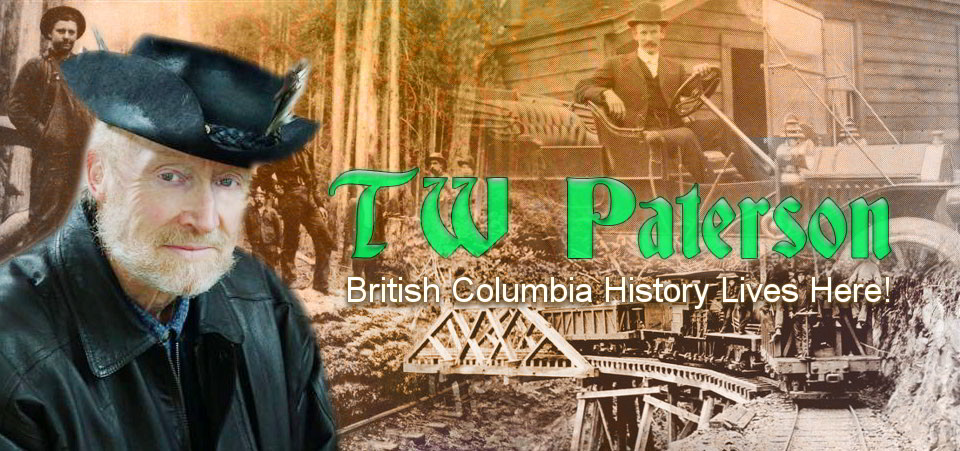
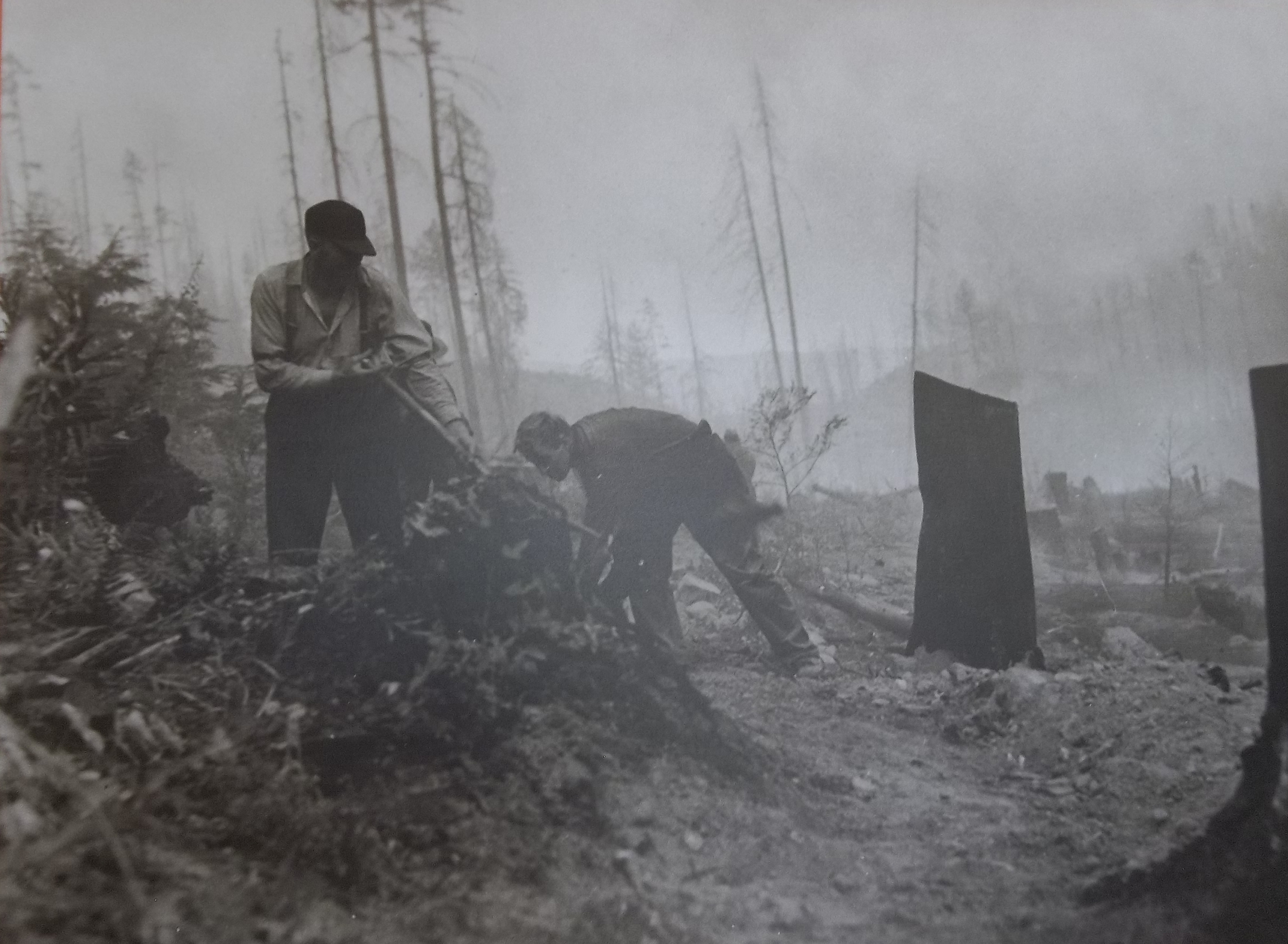
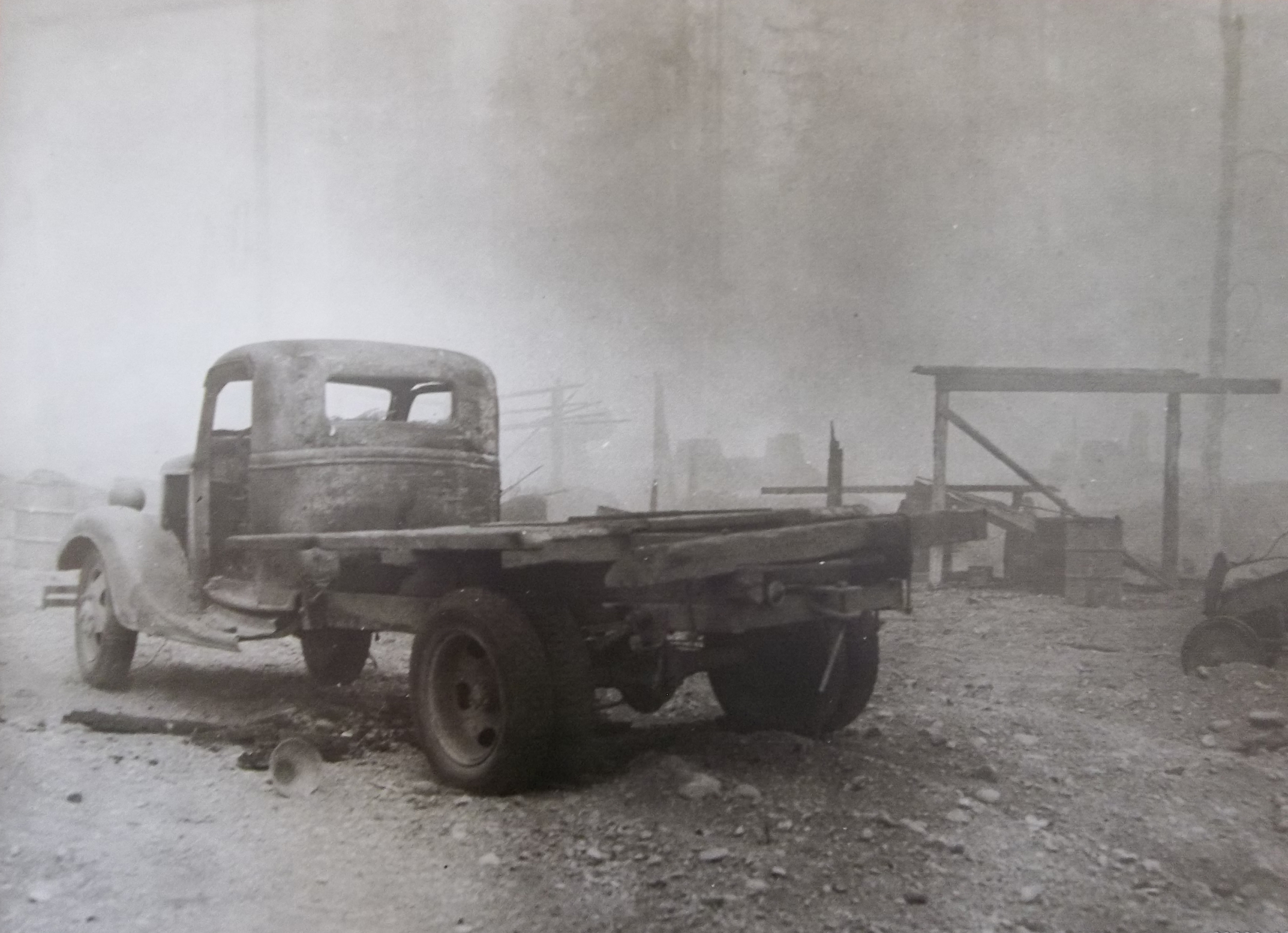
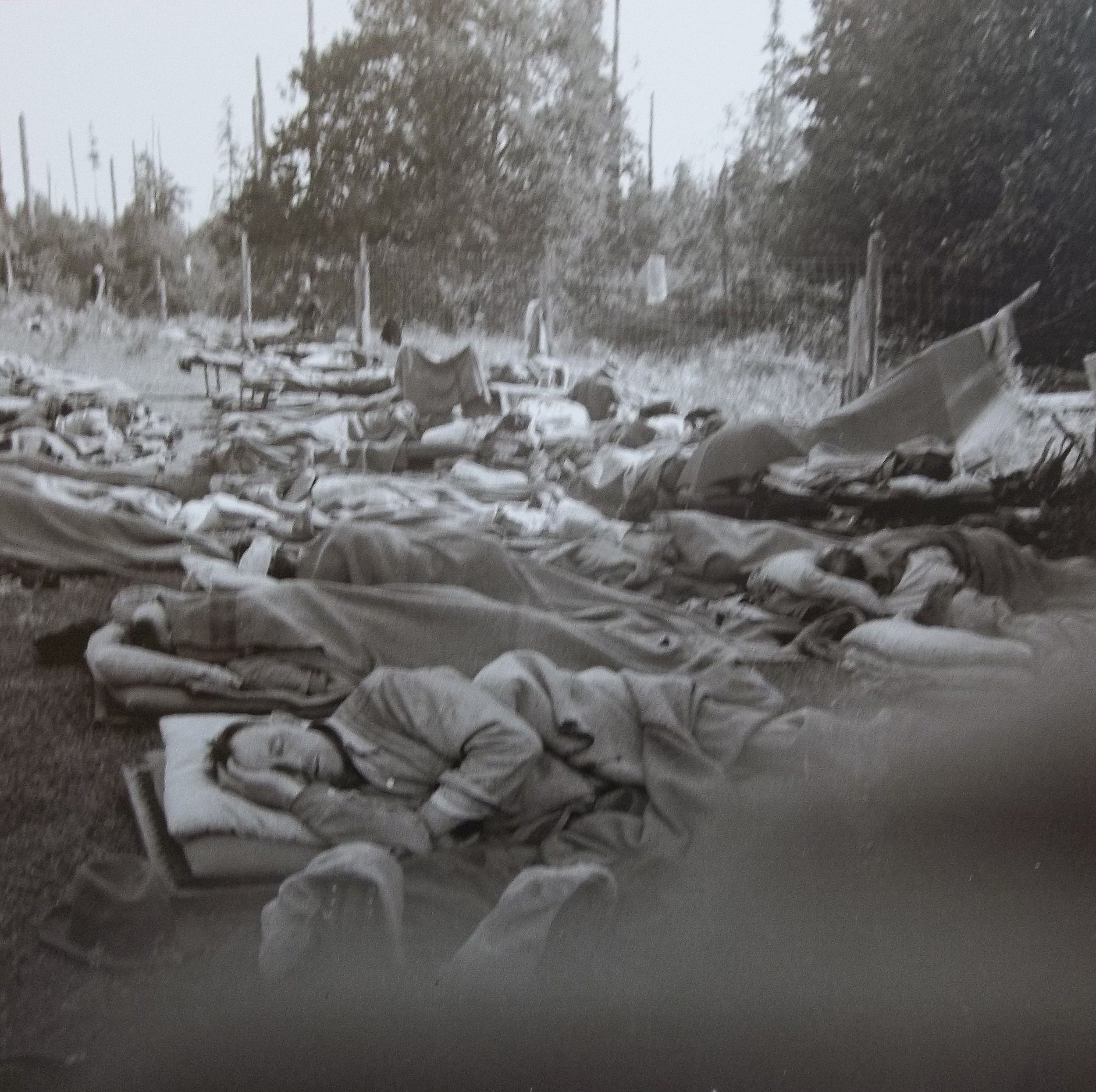
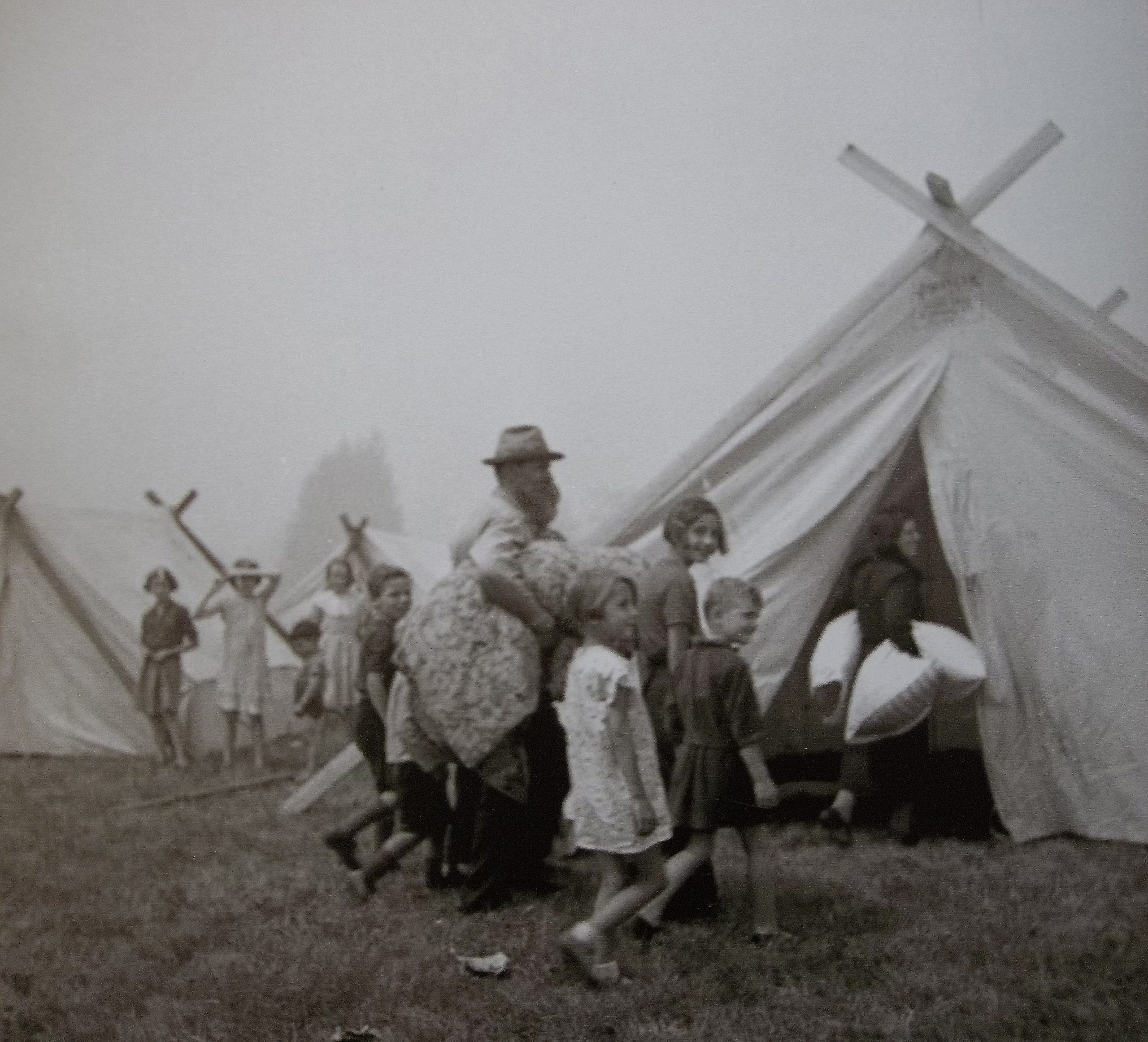
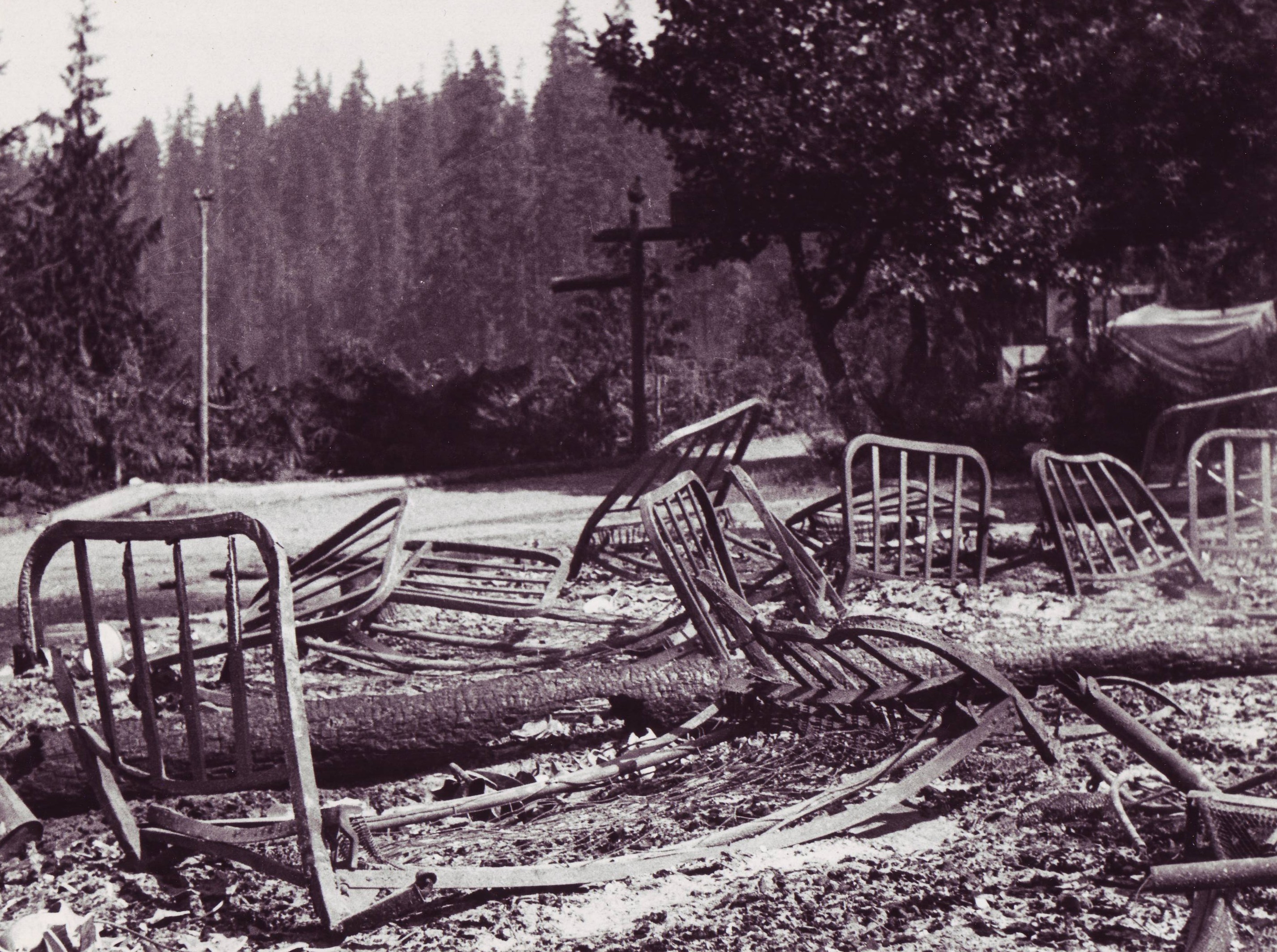
Is there a book published on this great fire?
Hi, Shannon: I wrote about it (a chapter) in my 1970s book, Disaster. But it doesn’t tell you anything more than I have on my website. –TWP
I highly recommend “Broken Ground” by JACK HODGINS. It is a superb novel and focuses on the experience of The fire as it affected settlers of MERVILLE, Vancouver ISLAND.
-B. Leigh
You’re right! I’d forgotten about this, not having read it for 30 years. Thanks for the reminder and the tip for my readers: Broken Ground, by Jack Hodgins.
Which only goes to prove that writers of fiction always base their works on real life. –TWP
It is only thru great fortune that we have Elk Falls Provincial Park in all it’s old growth glory today..
Check out the new suspension bridge across the canyon!! Remember to pack water and layer lightly.. it is a bit of a walk at the present time while the main road is closed for upgrades to the infrastructure within the park..
Hi, Karla: The scary thing with this ongoing heatwave and outbreak of fires is that we don’t know where disaster, too often caused by human carelessness, will strike next.
Can you imagine the resulting devastation of any of our great parks, Elk Falls or any of the others? And Cathedral Grove!
It takes a human lifetime for Nature to repair the damage. Speaking of whom, where would we be without Mother Nature and her never-ending attempts to repair the damage that we human beings cause this poo planet. Some are beginning to believe that humankind is on a crash course with tipping the environmental balance over the edge.
We may not have to deal with it–but our grandkids sure will, big time. Again, thanks for dropping in! –TWP
Very interesting, Tom – I recall some of that time – I was a little kid of 8 years old, but the adults talked about it. We had just moved to Mill Bay from Sooke.I believe my Dad went up there, he was logging at the time up the hill from Verdier Point – there was a log dump there. Thanks.
Hi, Joan:
As noted in a previous comment, you probably read my ‘Great Fire’ post because of our current forest fire situation on Vancouver Island and on the British Columbia mainloand. It’s scary as this is only early July, we’ve been in drought mode now since April with at least–at least–three and a-half months to go ’til late October.
I worry for the forests, the wildlife and the fish, never mind my acre of trees that need watering,too. All that at the fact that I’m not a ‘heat freak’. Cheers, TWP
Not just a great story, but great writing. I couldn’t stop reading. 🙂
And thank you for the kind comment, your reading of my post on the ‘Great Fire’ no doubt inspired by the fact that we’ve had days of smog thanks to forest fires here on Vancouver Island and on the B.C. mainland.
When I was a kid, growing up in Saanich, it was a common phenomenon in late summer; not the smoke from forest fires but the smoke from slash fires, it being a demand of B.C. Forest Service that logging companies burn the debris from their logging ops.
Today they have to leave it on the ground or, in some cases, gather it up into humongous piles and burn it in the wet season.
I pity anyone with a respiratory problem over the past few days although the cloud cover did drop the temperature a few degrees! –TWP
Such great and interesting stories you write T.W. I am sure I have read just about all of them. I live in Zeballos (home of the Fabulous Privateer Wonder Mine!)of which you have written about. As for the fires, we have already had a small grass and beach driftwood fire here at the Golden Gate Park on Saturday. It was put out quickly thank goodness. If the wind had been going in the other direction…the smallest municipality in BC might have been a goner! Come Visit!!
It’s going to be a long, hot, dry and scary summer, I’m afraid. The last thing we need or want is fire in the woods. Let’s be careful out there, folks!
Really Enjoyed your story, My Ancestors were involved in that struggle.
Enjoyed reading your post about the Great Fire. Even learned a few things. Didn’t know the Pattullo Bridge was named after a Premier. The thing that saddens me most though, is that we continually are telling people to be careful; (most try) yet there are those who still would deliberately set a fire; destroy fire equipment; and in general put so many at risk.
Yes I do remember . evean as a 10 year old, very scary
I am looking for people who knew my mother, Cherry Saaristo, of Merville born in 1929.
David Pugh
Good interview on CBC Radio today, TWP. You answered the question that a few friends have asked me, re: the biggest Vancouver Island fire in recorded history.
One friend works at the Dominion Observatory in Victoria. He caught a bit of you saying that you fought a fire on Mount Doug. Do you know off-hand if fire ever threatened the Observatory?
Thank you, Peter. CBC contacted me after picking up a post on FB about my ‘Great Fire’ blog here on twp.com.
The recent four-day smog from forest fires must have prompted people to Google forest fires and they found me.
As I write this, two days later, our weeks-long sunshine and heat have given away to light showers and overcast. Much cooler. Certainly works for me, particularly as, tomorrow, I lead my last Black Track Tour for the Friends of the Morden Mine at South Wellington.
If you’ve ever clambered over a coal pile in hot sunshine you’ll know why I’m hoping it’s cloudy tomorrow! –TWP
I googled this today, I was up above Goldstream campground and noticed some Old Growth Firs that had been scorched by fire years ago and am wondering when the fire went through there. the char is still fresh looking on the bark all though it must be decades old as the bark has stretched over a foot between char marks.
As I replied to a previous Comment, this likely is the Mt. Skirt fire, on the east side of the Island Highway at the southern entrance to Goldstram Provincial Park. August 1968. Sadly, as I also mentioned, two Flying Firemen died when their Canso water bomber crashed fighting this fire. Cheers, TW
We were driving back to Victoria from Duncan and just as we came out of Goldstream we saw that water bomber crash which started more fire such a sad sight we were living in The Highlands at that time hoping we wouldn’t be affected by this fire
Hi, Vicki: Yes, as I noted in my post, I and my friend Dave were caught in that same traffic tie-up that probably had cars backed up to Duncan. I still remember the guy in a car ahead of us, throwing a lighted cigarette butt onto the roadway. Of course it burned itself out on the pavement; but that’s not the point. His senseless act simply emphasized the tragedy of two men who’d just given their lives to trying to extinguish a fire that, too, likely was the result of human stuidity!
Very interesting – thank you. My children and grandchildren are on Vancouver Island and I worry about the danger of fires in this long hot summer. Thank you for keeping awareness raised of the importance of being ultra careful in the woods. Now to find a copy of ‘Broken Ground’!
You are certainly right that future generations are the ones who will have to deal with our carelessness and in some cases wanton destruction of this wonderful planet we live on. I fear for them.
In the meantime, bring on the rain!
Indeed, bring on the rain before we have any more fires. The front page story of today’s Times-Colonist is on whether the government should impose tougher penalities on people who start fires through sheer stupid behaviour.
True story: It’s an early Sunday evening in August 1968. It’s hot. It’s dry. My friend and I are driving home to Victoria after digging bottles in Cumberland Chinatown. South of Duncan, traffic is slowing down. By the time we get to the Malahat it’s grid-lock.
The air is grey with smoke from a fire on the western slopes of Mt. Skirt, immediately beside the Island Highway in Goldstream Provincial Park.
The radio informs us that two pilots of a water bomber had crashed and died on Mt. Skirt earlier that day while fighting the fire.
What sticks in my mind, all these years later, is that the guy in the car ahead of us flicks out his live cigarette butt and it bounces, sparking all the way, across the pavement to the shoulder. According to the news, most of the fires now burning in B.C. are human-caused.
Yes, pity our grandchildren. God only knows what we’re leaving them in the way of a battered planet…….. –TWP
Thank goodness we had a heavy rain overnight last night and a steady drizzle again today, or my anxiety level would have been a lot higher while reading this excellent piece.
I was told that Miracle Beach was so named because the women and children of the area were gathered there preparing for evacuation while the men fought the fire, but that the fire stopped on a ridge near the beach and all were spared. Can you confirm?
You’re a pretty good storyteller yourself, but that’s not how Miracle Beach got its name.
According to B.C. Place Names, it’s named because the Cape Mudge Indians befriended
a stranger by giving him food and shelter, unware that he had godly powers. He rewarded them
with wealth and prosperity and later saved them from an attack by the Cowichans. He also
transformed a princess into Mittlenatch Island.
Personally, I prefer your version! –TWP
Im looking for information on the fire, I think it was 1966-67 sprout lake… Any information on this fire would be wonderful.
Hi,Cindy: It’s Sproat Lake with an ‘a’, by the way (for Indian Agent and author Gilbert Malcolm Sproat). Your likely best bet to research this would be with the up-Island newspapers, all of which are on microfilm at the B.C. Archives in Victoria. Sproat Lake is famous for its ‘fire’ connection as the longtime base for the Martin Mars water bombers. Out of curiosity, I googled your fire and all the references brush fires at Sproat Lake date as recently as 2015. –TWP
Not sure if you’re still interested since there’s been some press on this recently, but the big fire at Sproat Lake in 1967 was the Taylor River fire, also known as the Tay fire. (It’s become a somewhat important fire behaviour case study).
There was a nice 50th anniversary article featuring a Port Alberni local who recalls the time: https://www.albernivalleynews.com/news/50-years-later-alberni-logger-recalls-taylor-river-fire/
Also, the final report document is cached for posterity:
https://www.scribd.com/document/356553892/Tay-River-Final-Fire-Report
Thank you, Dan. I’ll check these sites, not having been aware of them. I still remember the devastation immediately after the fire as the West Coast Highway runs right through this area. It looked like a moonscape. –TW
I found this report really interesting, thank you.
There is also an account of this fire by John Parminter, Research Branch, B.C. Forest Service, 1994, called “Darkness at Noon – The Bloedel Fire of 1938” at https://www.for.gov.bc.ca/hfd/pubs/Docs/scv/scv871.pdf. It contains an overview and a day-by-day “diary entries” taken from various newspapers, magazines and fire fighters’ reports.
Any idea how Morton lake got its name? I heard it was named after a family member of mine, due to his efforts over this fire, but have not been able to confirm if this is true.
I don’t have an immediate answer for you. But you can check with the nearest historical society/museum and with the Geographial Names Boad of Canada. They’re available online. –TWP
CBC was hoping to chat with you about the great vancouver island fire. Can you call jean at 250 414 4704 or email jean.paetkau@cbc.ca
Hi, Jean:
This sure seems to be a hot topic (ha ha) right now!
I originally wrote it more than 30 years ago, but that’s the beauty of history–it never goes out of style.
Neither do forest fires, unfortunately, and I’ve come to dread the arrival of each summer… TW
What an amazing thread & site, sir! Grateful that Lotus Johnson from one of the Old Victoria FB pages posted info in the Great Fire earlier today.
As a former native Islander who spent summers from the early ‘50s to mid ‘60s at Genoa Bay, how well I remember the sheer terror we all felt when even the smallest brush fire broke out. Even as a youngster, I was part of “bucket brigades.”
My late brother, a pilot, was a buddy of one of the men who died in the Canso crash above Goldstream. I remember reading last year, on one of the Vic FB pages, that the wreckage is still on the mountain.
Thank you again for this engrossing narrative, even if I discovered it only today.
Thank you, Virgina, for that lovely email.
I have written about the Canso crash on Skirt Mountain, in 1968, and visited the site several times. In fact, the day it happened, a friend and I were returning from digging bottles in Cumberland’s Chinatown when we got caught in a horrendous traffic jam on the Malahat.
They were still fighting the fire and recovering the bodies of the two pilots…
Wlhen I lived at Cherry Point, Cobble Hill, it was common practice for the Flying Firemen to fly right over my house during work-ups each spring when they prepared their planes for the coming fire season. To this day I have a soft spot for the historic Canso! Thank you again for writing. –TW
PS: You mentioned the fear of brush fires when you lived at Genoa Bay. Today, fires are raging on Maple Mountain and on Mount Benson, Nanaimo, and it appears that we have a lot of dry, hot weather ahead of us. Here’s hoping that the Great Fire of 1938 (80 years ago this month) isn’t repeated!
It was this forest fire that provided the impetus for the provincial government to start a reforestation program. A vast portion of the Sayward forest burned. Foresters looked a the damage and realized that if they didn’t do something a lot of it would never be reforested. the seed from live trees couldn’t disperse far enough.
Thank you for pointing out that fact. Forestry is another of my favourite subjects, both historically and currenty, particularly re: ecology and environment. The story of tree planting is quite fascinating and, of course, carries on to this day.
If you poke about the bush as I do you you can still find evidences of old fires, not all of them from lightning or other natural causes, but from the days when the government dictated that logging companies had to burn the slash when they were finished. When I was a kid in Saanich it was common for the sky to be overcast with smoke from slash fires…
Several years ago, in the Parksville-Qualicum area, I saw that some cedars which had been killed by fire decades ago, had fallen across a public trail and had been bucked up and moved aside. The fire had preserved the wood which was still pink and fresh inside. A carver would have given his eyeteeth for such wood–before they bucked it into short lengths. Not that it mattered, as parks policy is to leave old treefalls to return to nature… –TW
Thank you for this interesting read. I was born in Duncan on the 3rd of July, 1938 and returned with my mother to Camp 6 up Cowichan Lake where my father worked. I would be interested in learning more about that area during the time of the Great Fire. I had not heard about this before but I assume that the forests would have been closed to logging and all loggers would have been on fire fighter duty. Any suggestions as to where I could find more information?
Hi. There is some information available online but your best sources are the newspapers of the day, particularly the Colonist, which is online, and the Victoria Daily Times. For more specific news about how the fire affected the Cowichan Valley, including the Camp 6 area, there’s the Cowichan Leader but you likely would have to access that the hard way via microfilm at the Royal B.C. Archives or the Cowichan Valley Museum/Archives here in Duncan. It’s on the third floor of City Hall, Wed-Fri afternoons by appointment.
Although the ‘Great Fire’ of 1938 was devastating the damage, in dollar and human values, pales alongside the fire in the Kamloops(?) of several years ago.
Still, a great story, and my most popular post at this time of year when fires are to the fore. –TWP
Absolutely fascinating. Thank you for the walk back through time. Born and raised in Port Alberni. Moved away for a couple years but retured and met the love of my life and 4 kids later here we are…
Thank you for taking the time and effort to acknowledge my efforts, Ward. Much appreciated!
And,, speaking of forest fires, we appear (touch wood) to have dodged the bullet this summer. (So far, anyway.) TW
Interesting read, I’m helping my hubby research major forest fires on Vancouver Island, are you aware of any major ones in the Sooke area, particularly west of Sooke in Otter Point or Shirley BC, or any suggestions for research other than newspapers or museums (I’m searching those sites currently). Thanks
Hi, Laurel: I know that two large forest fires crowned the Malahat some time in the mid-50s, which is mighty close to Sooke.
Newspapers are probably your best bet. Have you tried Sooke Regional Museum? It’s really good and might be able to assist you. Good luck. –TW
Love all the comments “do we eveDenisr learn” very appropiate. Denis
Who was it that said, “The only thing we learn from history is that we learn nothing from history”?